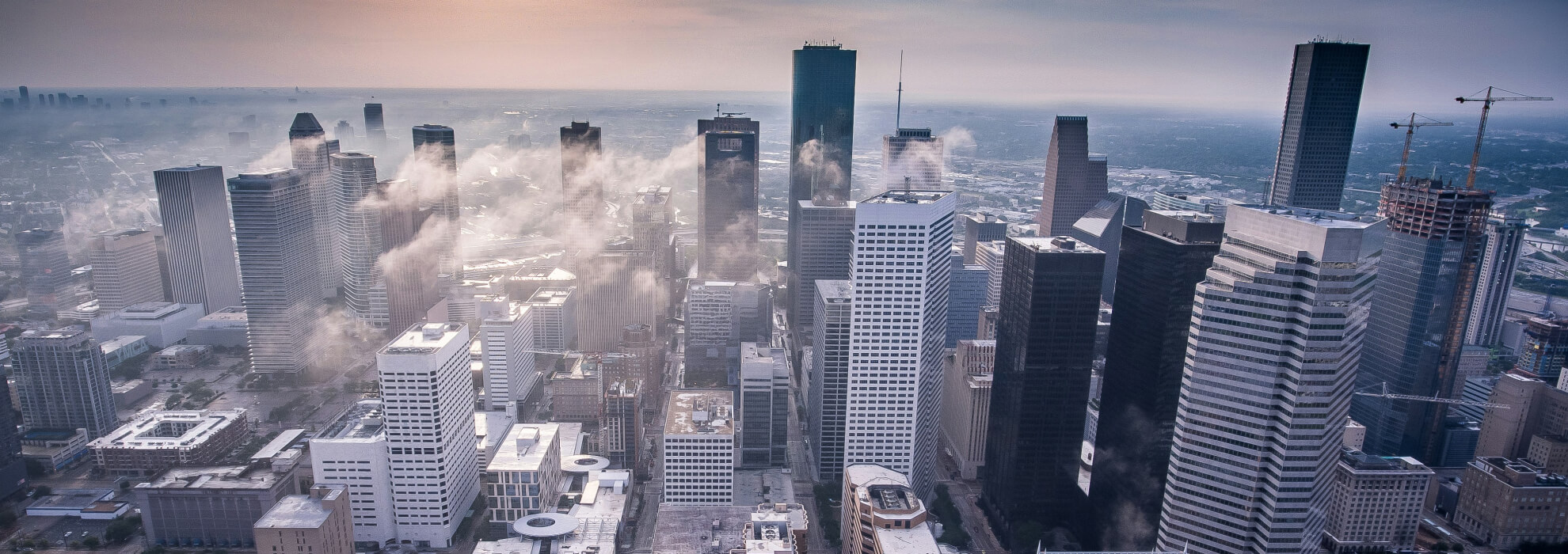
Watch short for this article (5 slides)
Birthplace of Islands: Exploring the Dynamic Landscapes of Hawaiʻi Volcanoes National Park
Located on the southeastern shore of the Island of Hawaiʻi (the "Big Island"), Hawaiʻi Volcanoes National Park is a dramatic testament to the raw, elemental forces that shape our planet. It's a place where new land is actively being born from fiery eruptions, showcasing two of the world's most active and imposing volcanoes: Kīlauea and Mauna Loa. Designated as both a UNESCO World Heritage Site and an International Biosphere Reserve, the park offers an unparalleled opportunity to witness volcanism in action, explore unique ecosystems adapted to volcanic terrain – from stark lava fields to lush rainforests – and connect with the deep cultural significance these powerful mountains hold for Native Hawaiians. It's a landscape in constant flux, demanding respect while offering profound insights into Earth's geological heartbeat.
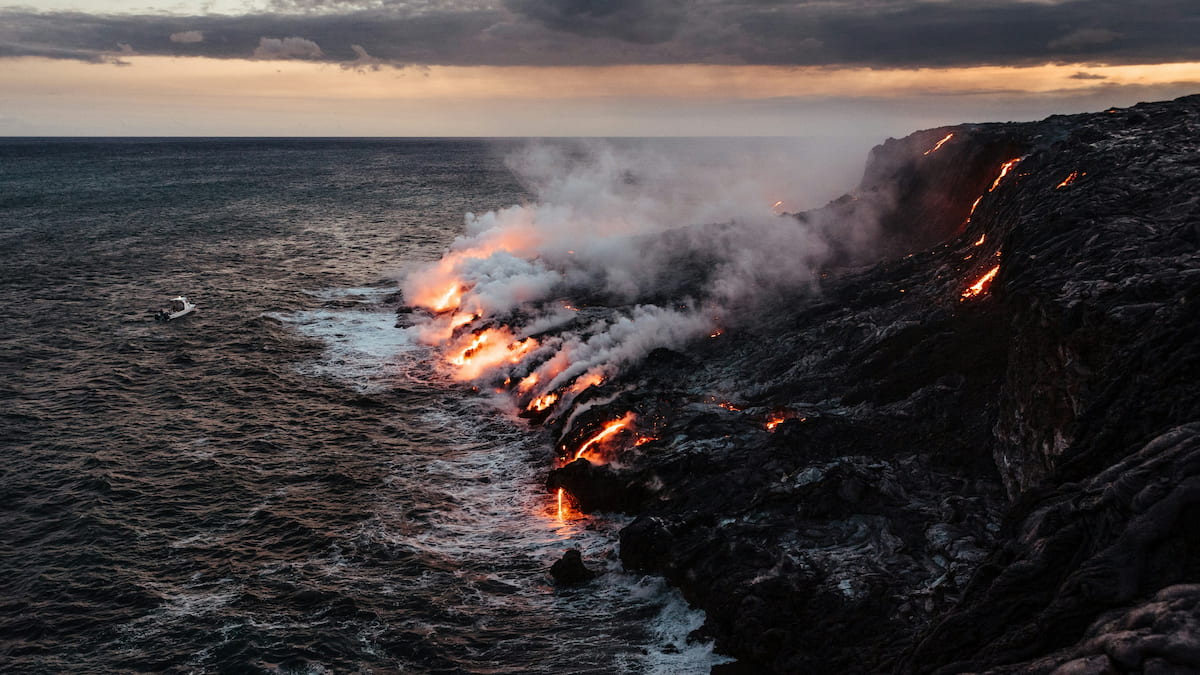
Photo by Cedric Letsch on Unsplash - Active lava flows showcase the ongoing creation of land.
The Engine Beneath: Hotspot Volcanism
The Hawaiian Islands themselves are a product of hotspot volcanism. Unlike volcanoes formed at tectonic plate boundaries, the Hawaiian chain was created as the Pacific Plate slowly drifted northwestward over a stationary plume of exceptionally hot magma rising from deep within the Earth's mantle (the Hawaiian hotspot). For millions of years, this hotspot has acted like a blowtorch, melting through the overriding plate to fuel volcanic eruptions on the surface.
As the plate moves, older volcanoes are carried away from the hotspot, become extinct, and gradually erode and subside beneath the waves (forming the Emperor Seamount Chain). The youngest and most active volcanoes are located directly over or near the hotspot, which is why Kīlauea and Mauna Loa, along with the undersea volcano Lōʻihi Seamount further southeast, represent the current stage of island building. Hawaiʻi Volcanoes National Park, established in 1916, was specifically created to preserve the unique volcanic landscapes generated by this ongoing process and the ecosystems they support.
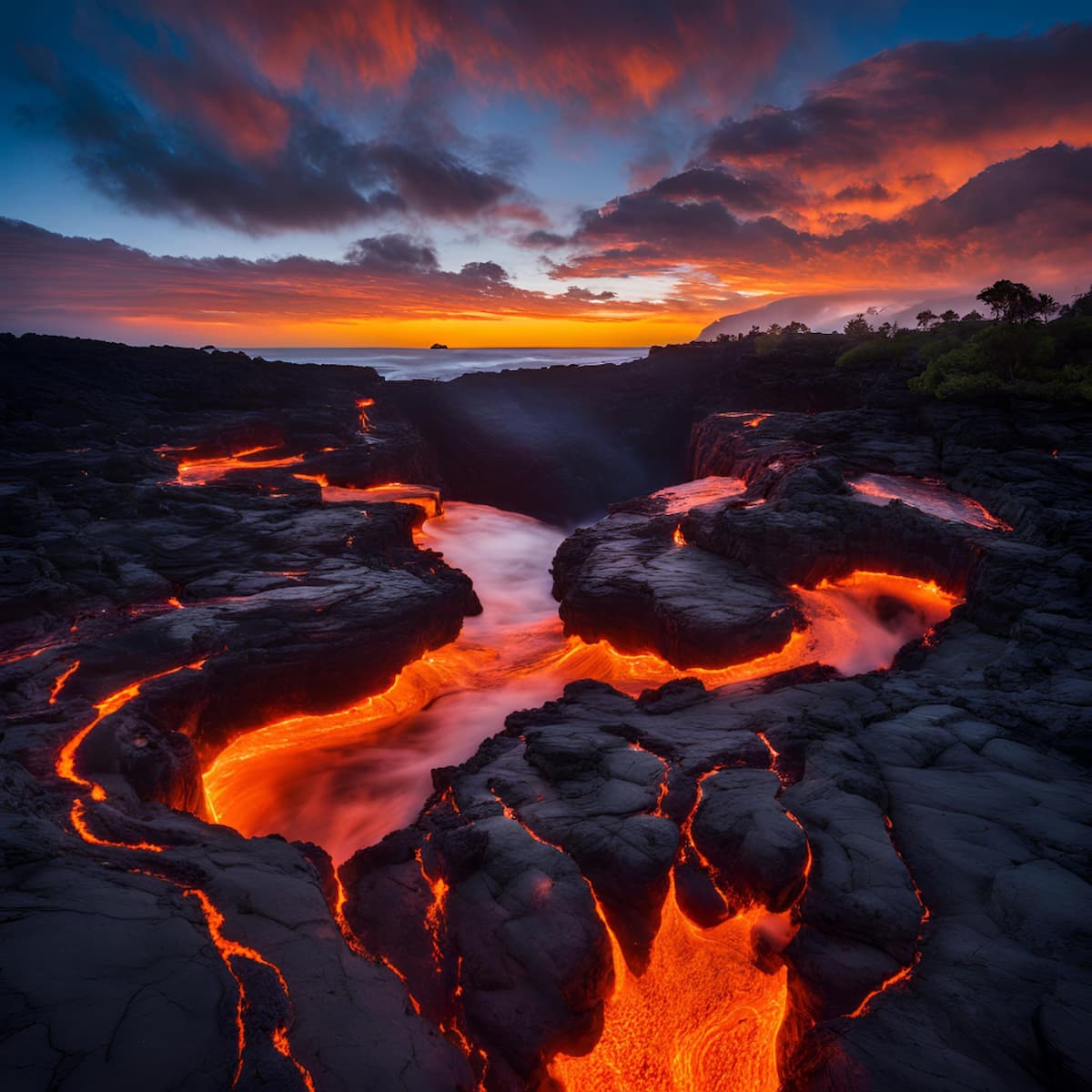
The Hawaiian Islands formed sequentially as the Pacific Plate moved over a stationary mantle hotspot.
Kīlauea: The Prolific Erupter
Kīlauea is renowned globally for its frequent and often prolonged eruptions, making it one of Earth's most active volcanoes. It's a classic example of a shield volcano, characterized by broad, gently sloping sides built up over time by repeated eruptions of fluid, low-viscosity basaltic lava.
- Summit Caldera and Halemaʻumaʻu Crater: Kīlauea's summit features a large caldera (a collapsed volcanic crater), within which sits the iconic Halemaʻumaʻu crater. This crater has a dynamic history, frequently hosting lava lakes – mesmerizing pools of molten rock – during periods of high eruptive activity. The glow from an active lava lake can illuminate the night sky spectacularly. The size and depth of the crater have changed dramatically over time due to collapses and eruptions, most notably following the major eruption sequence in 2018 which caused significant summit collapse.
- Rift Zones: Much of Kīlauea's eruptive activity occurs not just at the summit but also along its two main rift zones – linear fractures extending eastward (East Rift Zone) and southwestward (Southwest Rift Zone). These zones act as conduits, allowing magma to travel laterally underground and erupt from fissures miles away from the summit. The long-lived Puʻu ʻŌʻō eruption (1983-2018) and the dramatic 2018 lower East Rift Zone eruption occurred along these features.
- Eruption Style: Kīlauea's eruptions are typically effusive, characterized by relatively gentle outpourings of fluid lava flows (both ropey pāhoehoe and rough, clinkery ʻaʻā). However, explosive interactions can occur, especially if magma interacts with groundwater (phreatomagmatic eruptions) or during caldera collapse events, generating ash plumes and dangerous pyroclastic density currents, as seen at times during the 2018 event. (Source: USGS Hawaiian Volcano Observatory - Kīlauea)
- *Important Note:* Kīlauea's activity is highly variable. Lava flows and viewing opportunities change constantly. Visitors MUST check the latest eruption updates and safety information from the USGS Hawaiian Volcano Observatory (HVO) and the National Park Service before visiting.
Mauna Loa: The Gentle Giant
Dominating the southern half of the island, Mauna Loa ("Long Mountain" in Hawaiian) is the largest active volcano on Earth in terms of volume and area. It covers roughly half the island and rises to an elevation of 13,681 feet (4,170 meters) above sea level. Like Kīlauea, it's a massive shield volcano built by countless fluid lava flows.
- Scale and Structure: Its sheer size is difficult to comprehend; its volume is estimated at around 18,000 cubic miles (75,000 cubic km). It also features a summit caldera (Mokuʻāweoweo) and prominent rift zones (Northeast and Southwest).
- Eruptive History: While less frequently active than Kīlauea in recent decades, Mauna Loa has erupted 34 times since 1843. Its eruptions tend to be much larger in volume than Kīlauea's, producing vast, fast-moving lava flows that can potentially threaten communities on its flanks, including Hilo.
- 2022 Eruption: After nearly 40 years of quiet, Mauna Loa erupted from November 27 to December 10, 2022. Lava flows emerged primarily from fissures on its Northeast Rift Zone, providing spectacular displays but ultimately not threatening any communities. This event underscored the fact that Mauna Loa remains a very active volcano requiring close monitoring. (Source: USGS Hawaiian Volcano Observatory - Mauna Loa)
- High-Altitude Environment: Mauna Loa's upper slopes reach into a cold, often snowy, high-altitude environment, contrasting sharply with the tropical conditions lower down. Access to the summit area is via a challenging hike or a narrow, steep road leading to the Mauna Loa Observatory (a key atmospheric research facility, not directly related to volcano monitoring operations).
Volcanic Landscapes: Tubes, Craters, and Vents
Past and present volcanic activity has created a unique suite of geological features within the park:
- Lava Tubes (e.g., Nāhuku - Thurston Lava Tube): These cave-like tunnels form during effusive eruptions of fluid pāhoehoe lava. As the surface of a lava flow cools and crusts over, the molten lava continues to flow beneath. When the eruption wanes and the internal flow drains away, it leaves behind an empty tube. Nāhuku (Thurston Lava Tube) is a readily accessible example, allowing visitors to walk through a segment formed roughly 500 years ago, surrounded by lush rainforest that grew on the older lava surface.
- Craters and Pit Craters: Besides the main summit calderas, numerous smaller craters dot the landscape. Pit craters form by collapse over subsurface voids or magma withdrawal, often appearing as steep-sided depressions along rift zones (e.g., along Chain of Craters Road).
- Steam Vents and Fumaroles: Areas where groundwater seeps down, is heated by underlying magma or hot rocks, and rises back to the surface as steam. These are common near the Kīlauea caldera rim (e.g., Steaming Bluff). Fumaroles release volcanic gases (like sulfur dioxide) along with steam. The pungent smell of sulfur is often noticeable near active volcanic vents.
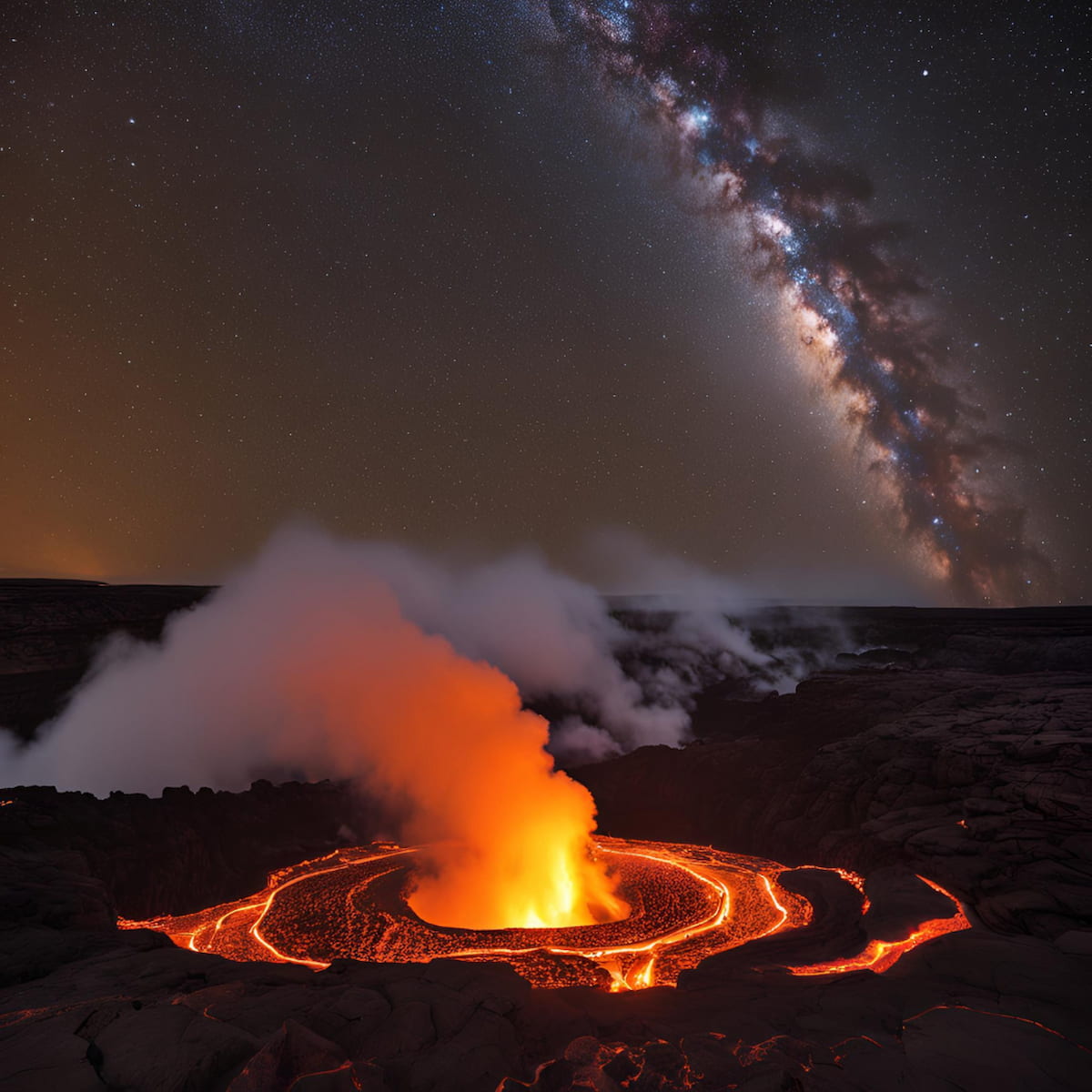
Lava tubes like Nāhuku (Thurston Lava Tube) offer a walk through volcanic history.
Life Finds a Way: Ecosystems Born from Fire
Despite the seemingly barren nature of fresh lava flows, Hawaiʻi Volcanoes National Park hosts a remarkable range of ecosystems, showcasing biological succession on volcanic landscapes:
- Pioneer Species on Lava Flows: The first life to colonize new lava flows includes hardy lichens, mosses, ferns (like the ʻamaʻu fern), and tenacious native plants like the ʻōhiʻa lehua tree (Metrosideros polymorpha). ʻŌhiʻa is often one of the first trees to appear, its bright red blossoms (lehua) contrasting vividly with the black lava.
- Rainforests: Areas with sufficient rainfall, often on the windward (eastern) slopes, support lush rainforests rich in ferns, ʻōhiʻa trees, and other native plants. These develop on older, weathered lava flows where soil has had time to form.
- Dryland Forests and Shrublands: Found in drier areas (leeward slopes or rain shadows), these habitats feature different suites of adapted native plants.
- Subalpine Zones: Higher elevations on Mauna Loa and Kīlauea transition into cooler, often wind-swept zones with specialized shrubs and grasses.
- Endemic Species: Due to Hawaii's extreme isolation, many native species found here evolved nowhere else on Earth (endemic). This includes unique birds, insects, and plants adapted specifically to the volcanic environment.
Wildlife in a Dynamic Habitat
While Hawaii lacks large native land mammals (except the Hawaiian hoary bat), the park provides habitat for unique birdlife and introduced species.
- Native Birds: The park is a crucial refuge for endangered native forest birds like the Nēnē (Hawaiian Goose - the state bird, often seen foraging in open, grassy areas), ʻApapane, ʻIʻiwi (known for their bright red feathers and curved bills), and others. Their populations face threats from habitat loss, avian diseases (like avian malaria spread by non-native mosquitoes), and introduced predators.
- Hawaiian Hoary Bat (ʻŌpeʻapeʻa): Hawaii's only native land mammal, this endangered bat roosts in trees and forages for insects.
- Introduced Species: Non-native mammals like pigs, goats, mongoose, and cats pose significant threats through habitat degradation, predation on native species, and disease transmission. Controlling invasive species is a major management challenge.
Cultural Significance: Pele and the ʻĀina
For Native Hawaiians, the volcanoes are sacred places embodying profound spiritual power. Kīlauea, in particular, is considered the home of the powerful volcano goddess, Pelehonuamea (Pele).
- Pele's Domain: Eruptions are seen as Pele's work – both destructive and creative, shaping the land (ʻāina). Offerings are sometimes left near Halemaʻumaʻu crater as signs of respect.
- Connection to Land: Traditional Hawaiian culture emphasizes a deep, reciprocal relationship with the land. Volcanic features, lava flows, and associated natural phenomena are woven into chants, stories (moʻolelo), and place names, reflecting generations of intimate observation and reverence. Respecting the ʻāina and Pele is paramount when visiting these sacred areas. (Source: NPS - History & Culture)
Visitor Experience and Safety
The park offers incredible experiences but requires careful planning and awareness of hazards:
- Must-Sees (when conditions allow): Kīlauea summit caldera viewpoints (e.g., Uēkahuna, Kūpinaʻi Pali), Nāhuku (Thurston Lava Tube), Chain of Craters Road (descends to the coast, often crossing recent lava flows), Holei Sea Arch.
- Hiking: Trails range from easy walks (like Devastation Trail through an area impacted by a 1959 eruption) to challenging hikes across craters (Kīlauea Iki Trail) or through rainforests. Backcountry hiking requires permits and preparation.
- Lava Viewing (Highly Variable): When eruptions occur in accessible locations, designated viewing areas may be established. Conditions change rapidly. Never approach lava flows outside designated areas. The ground can be unstable, fumes are hazardous (volcanic smog or "vog" containing sulfur dioxide), and new outbreaks can occur unexpectedly. Always obey closures and ranger instructions.
- Safety Hazards: Volcanic fumes (vog), unstable ground near cliffs and vents, earthquakes, potential for sudden explosive activity, and changing weather require constant vigilance. Stay on marked trails.
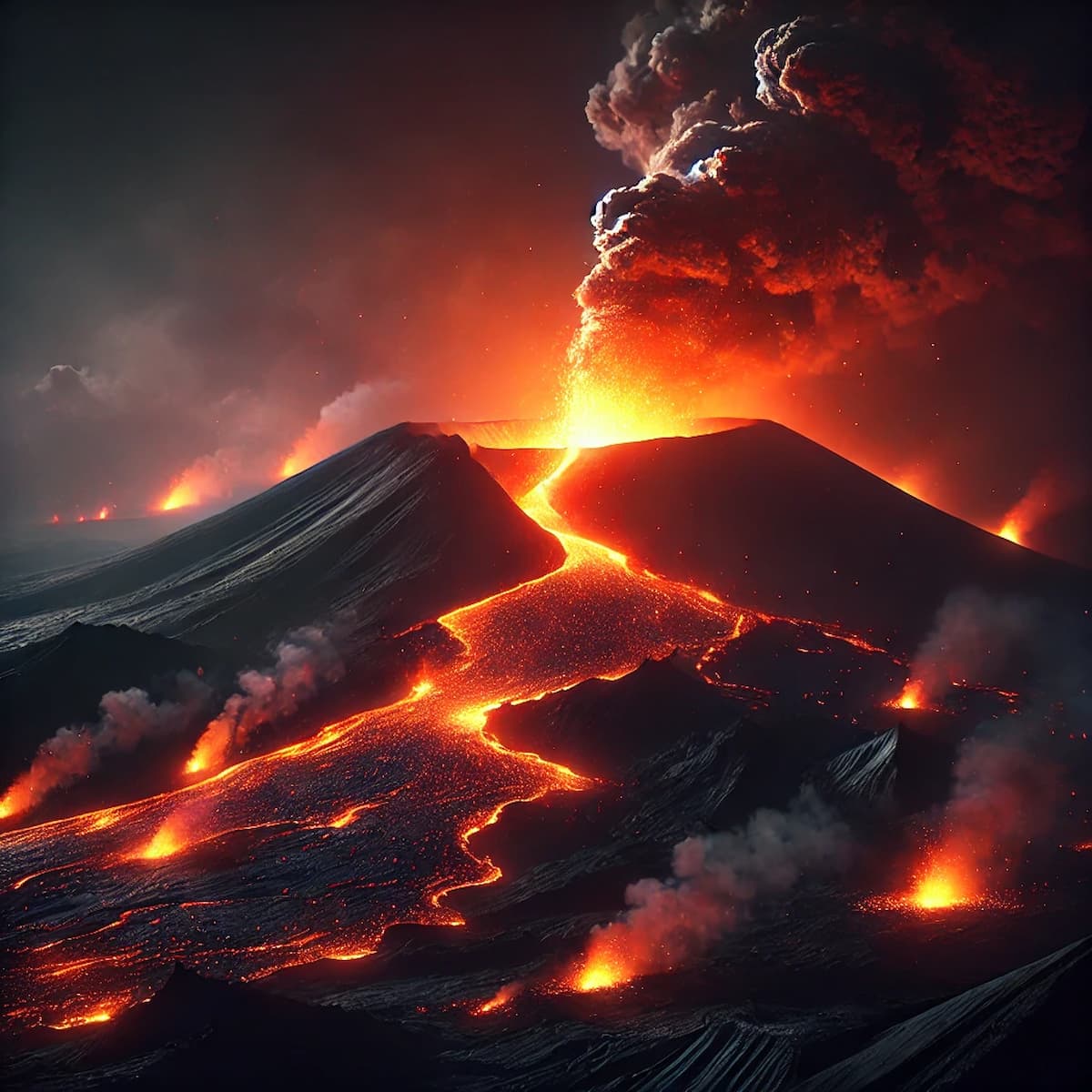
Visiting requires respecting closures, staying on trails, and checking current conditions due to dynamic volcanic activity.
Conclusion: A Living Geological Classroom
Hawaiʻi Volcanoes National Park is unlike any other place on Earth, offering a raw, visceral connection to the planet's creative and destructive geological forces. It is a landscape actively being written by molten rock, where unique ecosystems demonstrate remarkable resilience and adaptation, and where ancient cultural reverence meets modern scientific inquiry. Witnessing the power of Kīlauea and Mauna Loa, exploring landscapes sculpted by recent eruptions, and understanding the deep connection between the land and its people provides an unforgettable experience. It is a dynamic, ever-changing park that demands respect and rewards visitors with a profound sense of Earth's ongoing geological story.